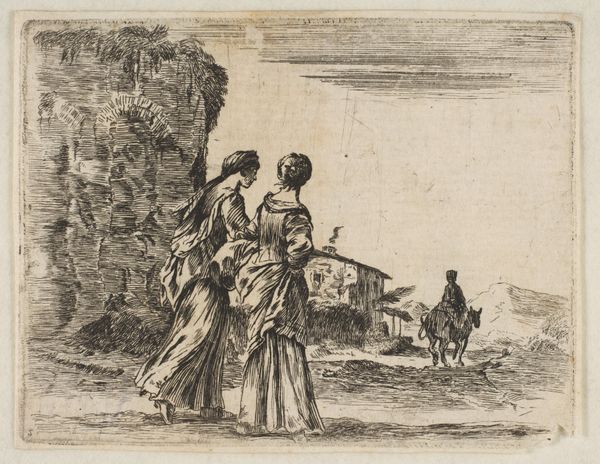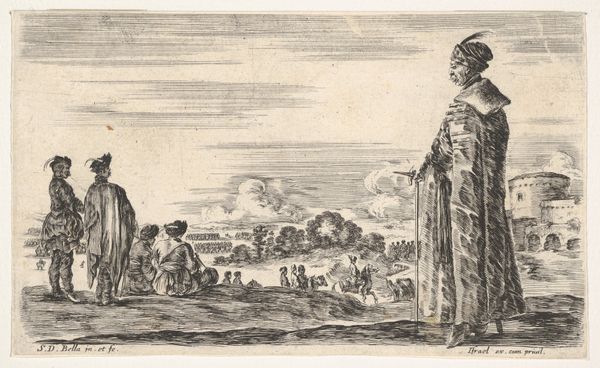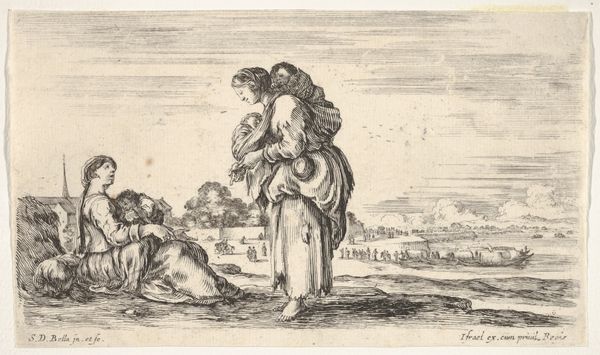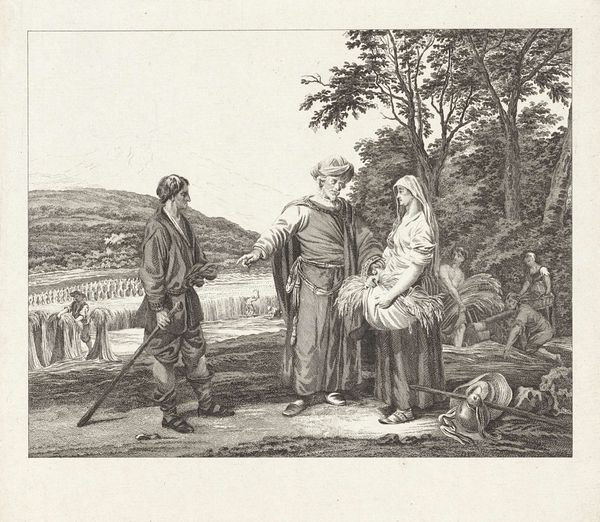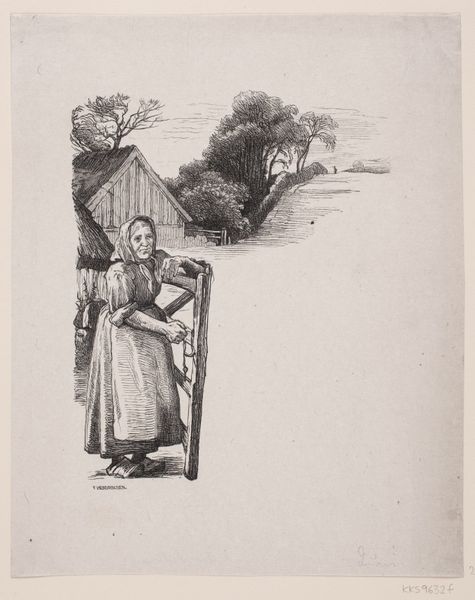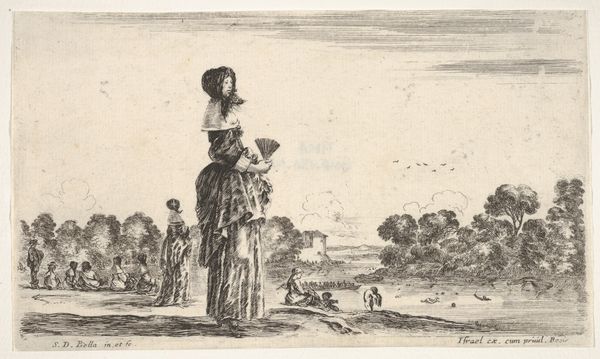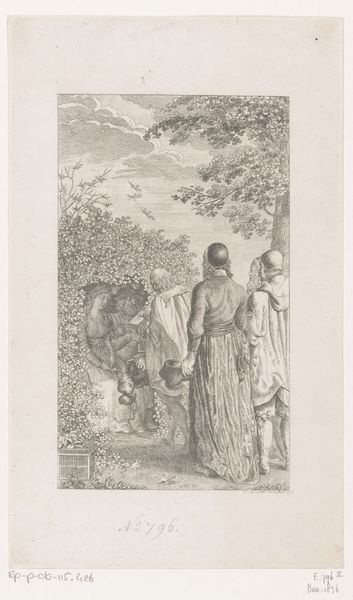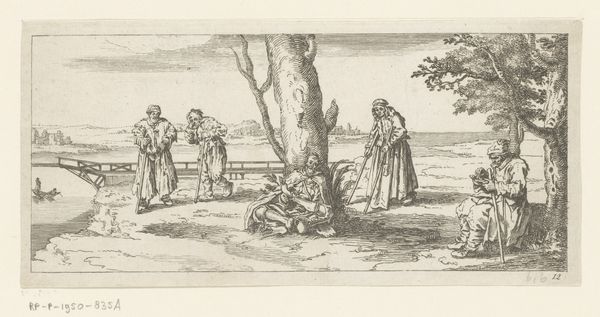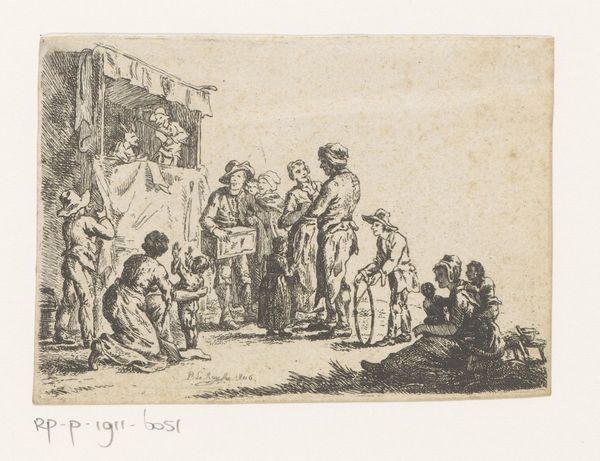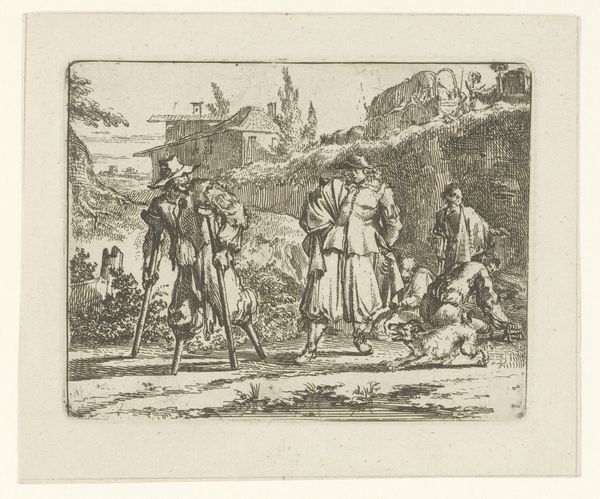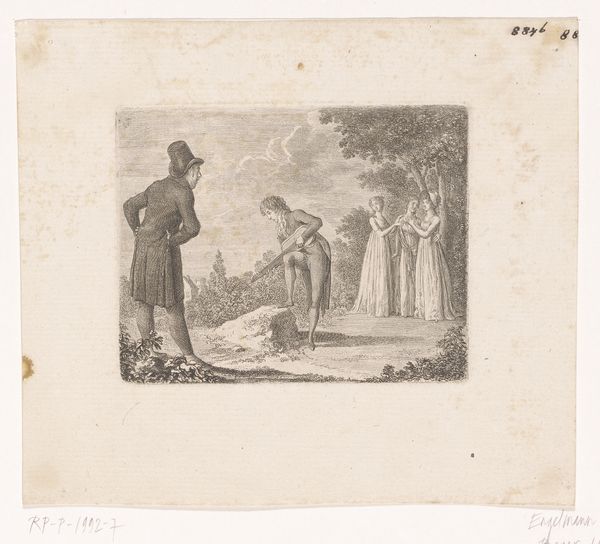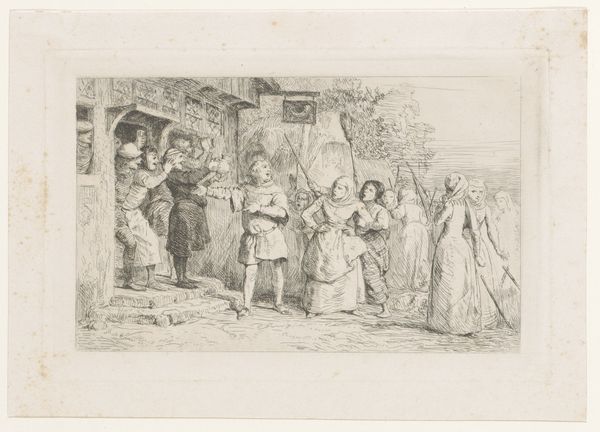
Plate 3: two girls walking towards the left, seen from behind, a woman on a horse to left in background, from 'Diversi capricci' 1639 - 1649
0:00
0:00
drawing, print, etching
#
drawing
# print
#
etching
#
landscape
#
figuration
#
horse
#
history-painting
Dimensions: Sheet: 3 1/8 × 3 11/16 in. (8 × 9.3 cm)
Copyright: Public Domain
Curator: Stefano della Bella created this etching, "Plate 3: two girls walking towards the left, seen from behind, a woman on a horse to left in background, from 'Diversi capricci'" sometime between 1639 and 1649. It’s now held at the Metropolitan Museum of Art. Editor: It feels so classical, yet informal, like a glimpse into a casual moment rather than a staged historical scene. The line work, particularly in the sky and the figures’ drapery, is so delicate, so light. Curator: Della Bella was incredibly skilled at capturing contemporary life and setting it within the Italian landscape. Consider how he uses these almost theatrical compositions to reflect on societal structures. This scene depicts women on a leisurely walk, a privileged activity indicative of their social class, yet it's framed by the crumbling ruins, speaking perhaps to the transient nature of power and beauty. Editor: It's precisely that contrast, that tension, that grips me. The two women, depicted from behind, create a compelling sense of mystery. We can’t see their faces, but their elegantly draped clothing and the way they lean into each other suggests intimacy, conversation. The way that shadowed figure rides towards them introduces a quiet moment to it. Curator: The series, "Diversi capricci," into which this piece falls, translates to "Various Caprices". It’s rife with such ambiguous narratives. These scenes don't spell out any clear historical event; they’re studies of observation. Think of the context: the print medium enabled wide distribution of images, thereby fostering dialogues and reflections upon such visual narratives of contemporary society and morality. Editor: Yes, and that availability is what makes his careful orchestration so incredible. Take a closer look at the crumbling architecture. Notice how Della Bella’s use of line, dense in the foreground yet so spare on the horizon, makes the figures grounded and alive. It anchors them in that moment while everything beyond exists in atmosphere. It is incredibly masterful, especially within the exacting demands of etching. Curator: The 'capriccio,' after all, was a popular form allowing for precisely that kind of exploration – blurring the line between pure fantasy and pointed commentary on the social and political landscape. It highlights how even seemingly simple depictions can reveal much about a society's values and anxieties. Editor: Ultimately, the success here stems from Della Bella’s capacity to balance observation and composition. It gives us not just an image, but an atmosphere, a quiet intrigue that stays with the viewer. Curator: Indeed, it gives a lot to reflect on. It pushes you to imagine the lives that existed, but were not documented.
Comments
No comments
Be the first to comment and join the conversation on the ultimate creative platform.
